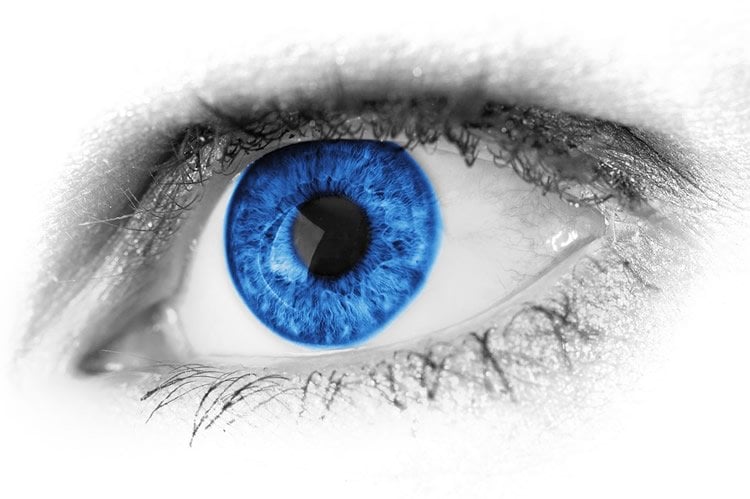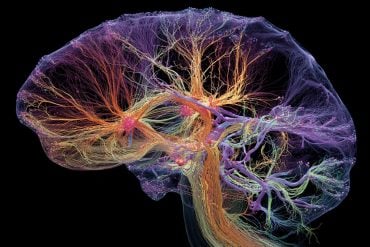Summary: A new study sheds light on why some people on the autism spectrum have problems maintaining eye contact. Researchers say that eye avoidance behavior may be triggered by excessive arousal stemming from an overactivation in a specific region of the brain.
Source: Mass General.
Imaging studies reveal overactivation of subcortical brain structures in response to direct gaze.
Individuals with autism spectrum disorder (ASD) often find it difficult to look others in the eyes. This avoidance has typically been interpreted as a sign of social and personal indifference, but reports from people with autism suggests otherwise. Many say that looking others in the eye is uncomfortable or stressful for them – some will even say that “it burns” – all of which points to a neurological cause. Now, a team of investigators based at the Athinoula A. Martinos Center for Biomedical Imaging at Massachusetts General Hospital has shed light on the brain mechanisms involved in this behavior. They reported their findings in a Nature Scientific Reports paper published online this month.
“The findings demonstrate that, contrary to what has been thought, the apparent lack of interpersonal interest among people with autism is not due to a lack of concern,” says Nouchine Hadjikhani, MD, PhD, director of neurolimbic research in the Martinos Center and corresponding author of the new study. “Rather, our results show that this behavior is a way to decrease an unpleasant excessive arousal stemming from overactivation in a particular part of the brain.”
The key to this research lies in the brain’s subcortical system, which is responsible for the natural orientation toward faces seen in newborns and is important later for emotion perception. The subcortical system can be specifically activated by eye contact, and previous work by Hadjikhani and colleagues revealed that, among those with autism, it was oversensitive to effects elicited by direct gaze and emotional expression. In the present study, she took that observation further, asking what happens when those with autism are compelled to look in the eyes of faces conveying different emotions.
Using functional magnetic resonance imaging (fMRI), Hadjikhani and colleagues measured differences in activation within the face-processing components of the subcortical system in people with autism and in control participants as they viewed faces either freely or when constrained to viewing the eye-region. While activation of these structures was similar for both groups exhibited during free viewing, overactivation was observed in participants with autism when concentrating on the eye-region. This was especially true with fearful faces, though similar effects were observed when viewing happy, angry and neutral faces.
The findings of the study support the hypothesis of an imbalance between the brain’s excitatory and inhibitory signaling networks in autism – excitatory refers to neurotransmitters that stimulate the brain, while inhibitory refers to those that calm it and provide equilibrium. Such an imbalance, likely the result of diverse genetic and environmental causes, can strengthen excitatory signaling in the subcortical circuitry involved in face perception. This in turn can result in an abnormal reaction to eye contact, an aversion to direct gaze and consequently abnormal development of the social brain.

In revealing the underlying reasons for eye-avoidance, the study also suggests more effective ways of engaging individuals with autism. “The findings indicate that forcing children with autism to look into someone’s eyes in behavioral therapy may create a lot of anxiety for them,” says Hadjikhani, an associate professor of Radiology at Harvard Medical School. “An approach involving slow habituation to eye contact may help them overcome this overreaction and be able to handle eye contact in the long run, thereby avoiding the cascading effects that this eye-avoidance has on the development of the social brain.”
The researchers are already planning to follow up the research. Hadjikhani is now seeking funding for a study that will use magnetoencephalography (MEG) together with eye-tracking and other behavioral tests to probe more deeply the relationship between the subcortical system and eye contact avoidance in autism.
The co-authors of the Nature Scientific Reports study are Nicole R. Zürcher, Amandine Lassalle and Noreen Ward of the MGH Martinos Center; Jakob Åsberg Johnels, Eva Billstedt and Christopher Gillberg of Gothenburg University, Gothenburg, Sweden; Quentin Guillon of the Lyon Neuroscience Research Center, Lyon, France; Loyse Hippolyte of the University of Lausanne, Lausanne, France; and Eric Lemonnier of CRA, of Limoges, France.
Funding: The study was supported by the Swiss National Science Foundation (grant PP00P3-130191), the Centre d’Imagerie BioMédicale of the University of Lausanne, as well as the Foundation Rossi Di Montalera, the LifeWatch Foundation, the AnnMarie and Per Ahlqvist Foundation, the Torsten Soderberg Foundation and the Swedish Science Council.
Source: Terri Ogan – Mass General
Image Source: NeuroscienceNews.com image is in the public domain.
Original Research: Full open access research for “Look me in the eyes: constraining gaze in the eye-region provokes abnormally high subcortical activation in autism” by Nouchine Hadjikhani, Jakob Åsberg Johnels, Nicole R. Zürcher, Amandine Lassalle, Quentin Guillon, Loyse Hippolyte, Eva Billstedt, Noreen Ward, Eric Lemonnier & Christopher Gillberg in Scientific Reports. Published online June 9 2017 doi:10.1038/s41598-017-03378-5
[cbtabs][cbtab title=”MLA”]Mass General “Why Some With Autism Avoid Eye Contact.” NeuroscienceNews. NeuroscienceNews, 28 June 2017.
<https://neurosciencenews.com/eye-contact-autism-6995/>.[/cbtab][cbtab title=”APA”]Mass General (2017, June 28). Why Some With Autism Avoid Eye Contact. NeuroscienceNew. Retrieved June 28, 2017 from https://neurosciencenews.com/eye-contact-autism-6995/[/cbtab][cbtab title=”Chicago”]Mass General “Why Some With Autism Avoid Eye Contact.” https://neurosciencenews.com/eye-contact-autism-6995/ (accessed June 28, 2017).[/cbtab][/cbtabs]
Abstract
Look me in the eyes: constraining gaze in the eye-region provokes abnormally high subcortical activation in autism
Individuals with Autism Spectrum Disorder (ASD) seem to have difficulties looking others in the eyes, but the substrate for this behavior is not well understood. The subcortical pathway, which consists of superior colliculus, pulvinar nucleus of the thalamus, and amygdala, enables rapid and automatic face processing. A specific component of this pathway – i.e., the amygdala – has been shown to be abnormally activated in paradigms where individuals had to specifically attend to the eye-region; however, a direct examination of the effect of manipulating the gaze to the eye-regions on all the components of the subcortical system altogether has never been performed. The subcortical system is particularly important as it shapes the functional specialization of the face-processing cortex during development. Using functional MRI, we investigated the effect of constraining gaze in the eye-region during dynamic emotional face perception in groups of participants with ASD and typical controls. We computed differences in activation in the subcortical face processing system (superior colliculus, pulvinar nucleus of the thalamus and amygdala) for the same stimuli seen freely or with the gaze constrained in the eye-region. Our results show that when constrained to look in the eyes, individuals with ASD show abnormally high activation in the subcortical system, which may be at the basis of their eye avoidance in daily life.
“Look me in the eyes: constraining gaze in the eye-region provokes abnormally high subcortical activation in autism” by Nouchine Hadjikhani, Jakob Åsberg Johnels, Nicole R. Zürcher, Amandine Lassalle, Quentin Guillon, Loyse Hippolyte, Eva Billstedt, Noreen Ward, Eric Lemonnier & Christopher Gillberg in Scientific Reports. Published online June 9 2017 doi:10.1038/s41598-017-03378-5







